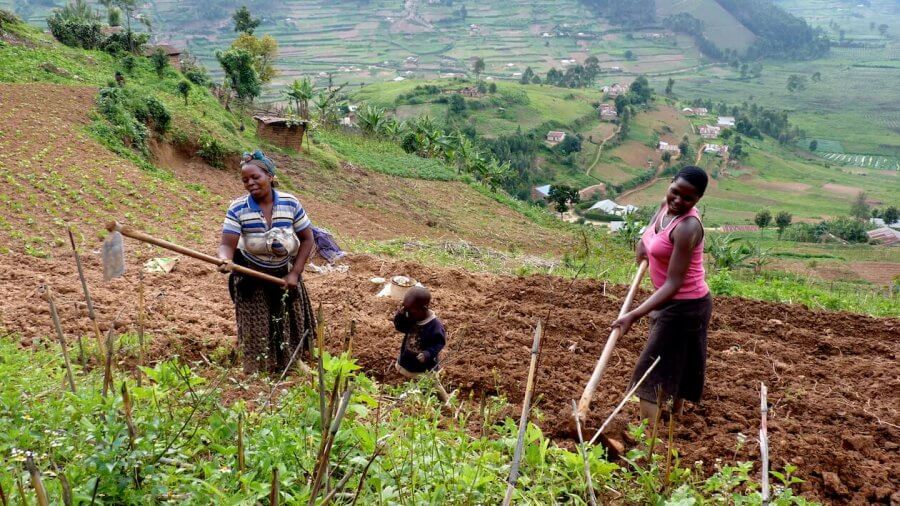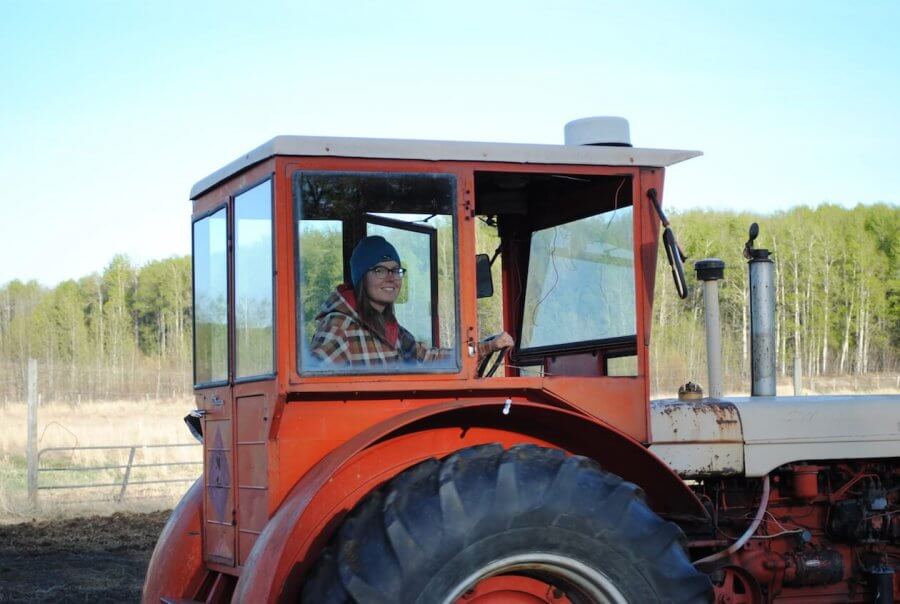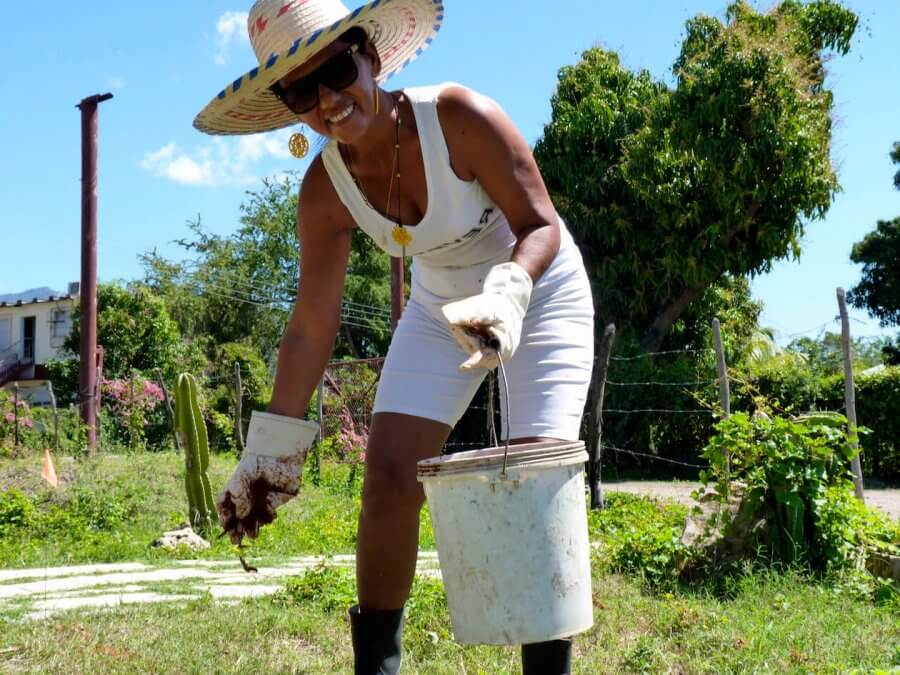My great-grandmother, Eleanor, boarded a steamboat with her husband, David, and their two sons, John and Desmond, in 1925. She waved goodbye to Ireland’s rocky shores, to the rolling green pastures, and to the stone-strewn farmland. They abandoned the marshy flats of Mountmellick, a tiny village located in the geographical centre of Ireland where her husband was born. Ireland was a country that no longer wanted them. David had served the British Empire as an officer for the Irish Guard, for which the Irish separatists despised him. But, beyond the fire that was smouldering between the British separatists and loyalists, my great-grandparents left Ireland because there was scarcely any land left to farm. David was the youngest boy of his four siblings. His father, a poor potato farmer, had nothing to offer his son. David inherited the knowledge of farming, but when it came to land, he only had rocks.
Eleanor and David fled their mother country and crossed the Atlantic in pursuit of what was called “free land” on the vast spread of the Canadian prairies. My great-grandfather had fought in the First World War, and under the Soldier’s Land Settlement Act of 1919, the British Empire offered him a loan to immigrate to Canada, settle on a quarter section of land outside Wolseley, Saskatchewan, and sow wheat where the native prairie grasses once sprang from the earth. They travelled in winter, before the thaw and fertile promise that spring brings. When they arrived, Eleanor could not believe her eyes. The door to the farmhouse, a wooden clapboard structure, was wide open. The snow had accumulated inside the house like a massive heap of sugar. David handed her a shovel and they began, digging in, carving out a new life on the land only ten kilometres south of the Qu’Appelle valley.
The story behind the naming of the Qu’Appelle River and valley reveals that my great-grandparents were not the first people called to settle on the Canadian prairies. In 1804, Daniel Harmon, a fur trader, paddled along the river and encountered a group of Cree hunters. The hunters told Harmon that a Cree spirit possessed the river, floating along the surface of the black waters, crying out in Cree, “kâ-têpwêt?” or “Qui appelle?” in French, meaning “Who is calling?” In the mid-nineteenth century, the Hudson’s Bay Company established a fur trading post on the Qu’Appelle River, and seventy years later, the forces of colonialism called my great-grandparents to the land that had never belonged to the Canadian government to sell.

For 10,000 years before David and Eleanor came, Indigenous communities lived in spiritual communion with the land without owning the land. Land ownership does not align with Indigenous cosmologies: land is the foundation for the life force; it cannot be owned. The Blackfoot, the Assiniboine, the Dene, the Cree, Saulteaux, and Métis peoples, among many other Indigenous groups, were hunting and gathering peoples who followed the migratory path of the buffalo, elk, deer, and caribou throughout the expanse of what would come to be known as Western Canada.
But when Eleanor and David arrived in 1923, the buffalo had been wiped clean from the prairie landscape, exterminated by the fur trade and the penetration of the Canadian Pacific Railroad. The stretch of grassland was cut up, divided, and stitched back together like a patchwork quilt. In 1870, the Canadian government bought Rupert’s Land from the Hudson’s Bay Company and forced Indigenous groups to sign over their former migratory territories in exchange for fragmented, often marginal, reserves of land. With the buffalo, their primary food source, long gone, Indigenous groups were essentially starved into surrendering their land.
My grandfather, John, grew up memorizing and immortalizing everything that happened on that patchwork square on the Saskatchewan prairie flats. His father, David, grew fields of maize and wheat, while his mother, Eleanor, cultivated an abundant garden with potatoes, carrots, purple beets, beans, peas, and giant heads of cabbage. They kept cattle, pigs, sheep, chickens, and a team of draft horses for pulling the plough through the fields. Every spring, Eleanor sheared the sheep for wool and spun it into yarn. When she wasn’t farming, she was cooking, canning vegetables, scrubbing away the prairie dust, and doing everything else that held the family together like a knit garment. Even during the 1930s, when the Great Depression ground the land into dust, scarcity, and want, my great-grandparents hung on, living off of Eleanor’s preserved foods and their hard labour and resourcefulness.
Throughout my childhood and adolescence, I loved listening to my grandfather’s stories of life on the farm. He and his brother, Desmond, ran wild, as farm boys do, target shooting from the barn roof, chasing snakes, and rescuing baby owls that had fallen from their nests. When the two-seater planes flew low over the maize fields, they chased the planes with their arms outstretched, trampling the young crops, without a worry in the world. My grandfather showed me an old black-and-white aerial photograph of the farm. He pointed at two distant figures standing outside the farmhouse. It was Eleanor and David, looking up into the sun and waving.

Though their closest neighbour was a kilometre away down the skinny dirt road, Eleanor and David were social people, often entertaining neighbours with tea and meals. I treasured a small square snapshot of two dozen men and women gathered round a large bonfire. They were holding long sticks with maize on the ends, which hovered over top of the large coals and fire. Every June, after the first harvest of the sweet kernelled crop, my great-grandparents held a maize roast on the farm, inviting neighbours and friends. In the photo, David stands in the middle of everyone, roasting a long cob with a large crooked smile on his face and a newsboy hat on his head. Eleanor wasn’t there. At first, I wondered if she was the one who took the photo. Later, I thought she was probably in the kitchen, boiling potatoes, peeling carrots, and tending to her guests, as farm women do. The photo felt to me oddly symbolic of my great-grandmother’s experience on the farm. Eleanor wasn’t in the picture, biting into the sweet maize, enjoying the harvest. She was a ghost behind the scenes. She was also the last to eat.
People would say that’s just the way it was for farm women back then. They were “farm women,” after all; they weren’t “farmers.” Between David and Eleanor, it was he who hitched the team to the plough, climbed into the driver’s seat, and held the soft leather reins. It was David who watched for bruised skies and rainclouds, calculated when to sow, and gathered with other men in town to complain about what to do with maize scab and to ask, “Where’s the rain gone?” It was he who harvested and sold the crops and came in from the fields to eat first. Eleanor was not invisible, of course. She was there and she was vital. But society did not see her as a farmer in the same way it saw her husband. Her knowledge and labour were invisible.
All of that changed when the Second World War broke out.
Eleanor soon found herself alone on the farm. In 1941, she waved goodbye to David and her eldest son, Desmond. In 1942, my grandfather, John, was barely a day over eighteen when he jumped on his horse and raced into Wolseley to enlist in the Canadian Reserves. He wanted to fly. After my grandfather was transferred to Prince Rupert, BC, Eleanor was all by herself. She was one body to nearly 81 hectares of maize, wheat, and pasture land. Overnight, Eleanor had found herself a farm woman and a farmer. The team of draft horses pawed at the floor, impatient to get out. They were indifferent to her gender. What was she waiting for?
During the Second World War, Eleanor was among thousands of Canadian women left behind on farms for the first time in Canadian history. They bid their husbands and sons and brothers and uncles and the farmhands farewell. They watched them drive away down the thread-thin roads. They felt the distance and uncertainty that war brings reverberating through the vast sea of the prairies. Government officials worried. Canada’s agricultural productivity was suddenly in question. With farmers gone off to war, what would happen? Would production plummet like a hammer from the sky? Would the country go hungry?

When my grandfather John told me Eleanor’s story, I was inspired by what I could only imagine. My great-grandmother: a farmer created out of hardship.
I imagined Eleanor inside the farmhouse, perched by the window, contemplating the swell of loneliness she must have felt looking out at the farm. I wondered how she survived the wide-open skies and silence of the Saskatchewan prairies, of the fields of maize and wheat, of the huge garden behind the farmhouse, of the skinny yarn of dirt road that unravelled itself for kilometres before reaching the nearest neighbour. I wondered if her tasks on the farm—the busying of hands, the breaking of sweat and spine and muscles, the immediate worry of finishing up before dark—eased the anguish about her husband and sons that must have otherwise been occupying her every thought.
Eleanor wasn’t alone. During the Second World War, over a million Canadian women took to the farms and fields to farm, just as they’d taken to the factories to work in the manufacturing industry. But the government added a suffix to the female farmers’ titles. “Farmerettes,” the government called them, as though “-ettes” made what a million sets of hands did somehow dainty and light.
The title made me laugh. I envisioned a farmer without dirt under her nails, with red lips and manicured hands. Of course, that was the government’s intent: to feminize farming to make farming more attractive, more appealing. It was part of a larger campaign to draw rural and urban women alike back to the land to “serve their country,” pitchforks in hand, to respond to the shortage of male farmers and labourers. The government distributed flashy posters of the sexy, charming farmerettes in action—perched on tractors, picking plums from a fruit orchard, tossing their hats victoriously into the sky—to encourage women to dig in and do their part to sustain the war efforts in Canada and Europe.
During the Second World War, my great-grandmother and other women farmers and farm labourers contributed to record-high levels of agricultural productivity in Canada. When France fell in late 1940, Britain became almost entirely dependent on Canada for grain imports. By 1941, Canada was supplying 77 percent of Britain’s wheat and flour, along with 39 percent of its pork, 15 percent of its eggs, and 24 percent of its cheese. Near the end of the war, Canada was still providing over 50 percent of Britain’s wheat. Due to women’s work on the farms and the national war efforts as a whole, which included rationing, gardening, and food preservation, grain production and exports increased by 800 percent and hog production by 250 percent. The women whose work was formerly overlooked suddenly became farmers in the eyes of society. Women played many roles in the success of Canada’s agricultural system during the Second World War.
Despite her enormous contributions, Eleanor’s efforts as a farmer barely register in Canadian history. The farmerettes’ stories were told in the footnotes of history textbooks, the ones you have to strain your eyes to see, like tiny figures in the distance, swinging the hand hoe steadfastly into the earth. I grew up listening to my grandfather tell stories about his time in England and about flying low in the sky and dropping bombs on the Germans. The stories told about the Second World War were mostly about men, stories I learned at Remembrance Day ceremonies, in history class, and by watching Hollywood movies. Men falling from the sky. Men at the front lines, victorious. Women tended to the wounded, fixed the bloody soldiers with their skill and solace. And, on the home front, they darned socks. But women rising to challenge of feeding a country and the war effort in Europe? What happened to that story? Why didn’t women make history the way men did?
From the book Women Who Dig: Farming, Feminism, and the Fight to Feed the World by Trina Moyles with photographs by KJ Dakin, copyright © 2018. Reprinted by permission of University of Regina Press.





